Golf is a game of precision, skill, and consistency. Every aspect of your equipment plays a crucial role in your performance on the course, and one of the most important yet often overlooked components is the golf club grip. The grip is the only point of contact between you and your clubs, making it essential for achieving a comfortable and consistent swing. Over time, grips can wear down, lose their tackiness, and become difficult to hold onto, which can significantly impact your game. In this article, we will explore why you should change your golf club grips, how to identify when they need replacing, how to choose the right size and material, and provide a step-by-step guide on how to change golf club grips effectively.
Why You Should Change Your Golf Club Grips?
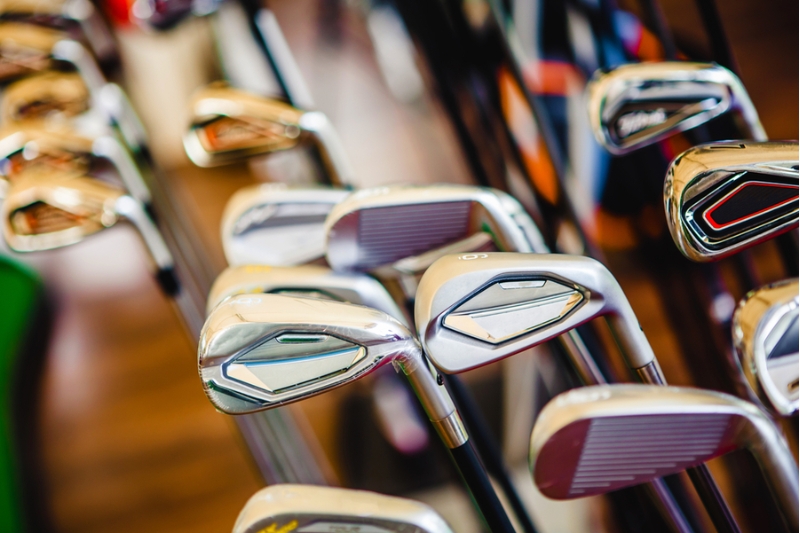
The importance of maintaining your golf club grips cannot be overstated. They are not just an accessory; they are a vital part of your golfing experience. Here are some reasons why changing your grips can lead to improved performance:
Loss of Control
When your grips become worn down, they lose their ability to provide adequate traction. This can cause your hands to slip during your swing, leading to inconsistent shots and a decrease in accuracy. A secure grip allows you to maintain control over the club throughout your swing, ensuring that you can execute your shots with precision.
A loss of control can manifest in various ways. For instance, you may notice that your shots are going off-target more frequently or that you’re struggling to hit the ball consistently. This inconsistency can be frustrating and can hinder your overall enjoyment of the game. By replacing your grips, you can regain that lost control and improve your shot-making ability.
Reduced Power
A good grip is essential for transferring energy from your body to the clubhead. When your grips are slipping, it hinders this power transfer, resulting in less distance and overall power in your shots. A firm grip allows you to harness your body’s energy and translate it into a powerful swing.
If you’ve noticed that your drives are falling short or that you’re not getting the same distance you used to, it could be a sign that your grips need replacing. By investing in new grips, you can enhance your power and ensure that you’re maximizing your potential on the course.
Pain and Discomfort
Worn-out grips can lead to discomfort while playing. If your grips have lost their cushioning or become slick, you may find yourself gripping the club too tightly to maintain control. This can result in blisters, soreness, and even injuries over time. A comfortable grip is essential for enjoying the game and performing at your best.
If you’re experiencing pain in your hands or wrists after a round of golf, it’s worth considering whether your grips are contributing to the problem. Replacing them with new, properly sized grips can alleviate discomfort and allow you to focus on your game rather than your pain.
Poor Shot-Making
Even a slight change in grip pressure can cause inconsistencies in your swing plane, shot trajectory, and overall shot quality. If you’re struggling to make solid contact with the ball or finding that your shots are unpredictable, it may be time to reassess your grips.
By changing your grips, you can ensure that you’re starting with a clean slate. New grips can help you establish a consistent feel and improve your shot-making ability, allowing you to play with confidence and precision.
Compromised Performance
Ultimately, replacing your grips can significantly enhance your overall performance on the course. Improved control, accuracy, and confidence in your swing can lead to lower scores and a more enjoyable golfing experience. Investing in your grips is an investment in your game.
In summary, changing your golf club grips is not just about aesthetics; it’s about improving your performance and comfort on the course. Whether you’re a seasoned golfer or just starting, understanding the importance of grips can help you take your game to the next level.
Signs That Your Golf Grips Need Replacing
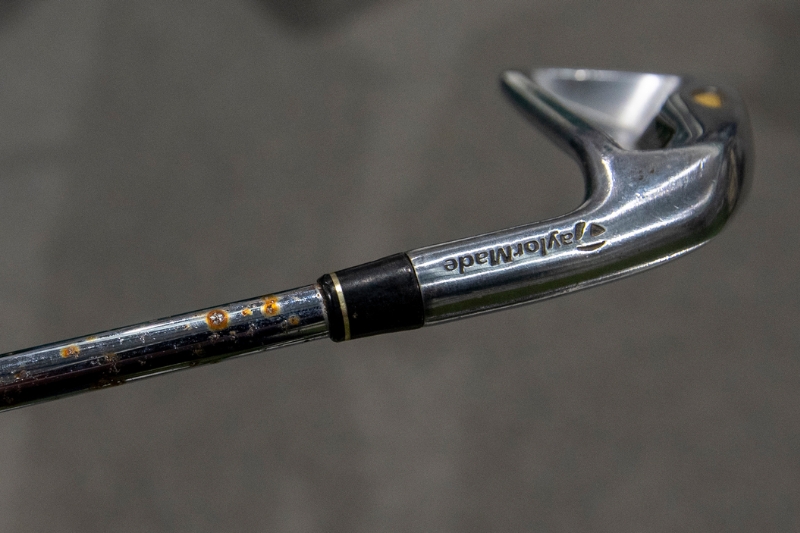
Recognizing when your golf grips need replacing is crucial for maintaining optimal performance. Here are some common signs that indicate it’s time for new grips:
Excessive Wear and Tear
One of the most obvious signs that your grips need replacing is visible wear and tear. Check for cracks, tears, or excessive grooves on the surface of the grip. These imperfections can affect your grip’s performance and lead to slippage during your swing.
Inspecting your grips regularly is a good habit to develop. If you notice any significant damage, it’s time to consider replacing them. Remember that grips are meant to provide traction and comfort, so any signs of deterioration should not be ignored.
Slipping During Your Swing
If you find that your hands are slipping during your backswing or downswing, it’s a clear indication that your grips are losing their tackiness. A secure grip is essential for maintaining control throughout your swing, and slipping grips can lead to inconsistent shots.
Pay attention to how your hands feel during your swings. If you have to constantly adjust your grip or if you feel like you’re fighting to maintain control, it’s time to replace your grips. A fresh set of grips can restore that much-needed tackiness and security.
Loss of Grip Pressure
You should feel a comfortable, secure grip on the club without having to squeeze too tightly. If you find yourself gripping the club too hard or feeling like you have to fight to maintain control, it may be time for new grips. A proper grip should feel natural and effortless.
If you’re constantly adjusting your grip pressure or feeling uncomfortable while holding the club, it’s a sign that your grips are no longer providing the support you need. Replacing them can help you achieve a more relaxed and effective grip.
Hardened Material
Over time, grips can become hard and rubbery, losing their ability to absorb shock and vibration. This can negatively impact your comfort and control during your swing. If your grips feel stiff and unyielding, it’s a strong indicator that they need replacing.
Hardened grips can also lead to increased hand fatigue, making it difficult to maintain a consistent swing throughout your round. By replacing your grips with new, softer materials, you can enhance your comfort and overall performance.
Loss of Texture
If your grips feel smooth and slick to the touch, it indicates that they have lost their grip pattern and need replacing. A good grip should have texture and provide enough friction to keep your hands securely in place during your swing.
Regularly checking the texture of your grips is essential. If they no longer provide the necessary traction, it’s time to invest in new grips that can enhance your performance and comfort on the course.
Choosing the Right Grip Size and Material

Selecting the right grip size and material is crucial for achieving a comfortable and effective swing. Here’s what you need to know:
Grip Size
Choosing the correct grip size is essential for ensuring a comfortable fit. There are three main sizes to consider:
- Standard Size: This is the most common grip size, typically fitting hands with measurements between 10.5 inches and 11 inches across the palm. Standard grips offer versatility and are suitable for many golfers.
- Midsize: A slightly larger size, suitable for hands measuring between 11 inches and 11.5 inches across the palm. Midsize grips provide extra cushioning and stability for those who prefer a thicker grip.
- Oversize: For golfers with larger hands, oversize grips provide additional stability and comfort. They can help reduce tension in the hands and promote a more relaxed grip.
Finding the right grip size is essential for achieving a natural and comfortable feel during your swing. If you’re unsure about your grip size, consult a professional or use a grip sizing tool to determine the best fit for your hands.
Grip Material
The material of your grips can significantly impact your performance and comfort. Here are some common grip materials to consider:
- Rubber: This is the most common grip material, offering a good balance of durability, tackiness, and feel. Rubber grips are versatile and suitable for a wide range of weather conditions.
- Cord: Textured with strands of cotton or nylon, cord grips provide a firmer feel for a more controlled grip. They are ideal for golfers who play in wet conditions or prefer a more textured surface.
- Leather: Leather grips offer a premium feel and excellent durability, though they tend to be more expensive. They are often favored by golfers who appreciate high-quality materials and craftsmanship.
- Synthetic: A variety of synthetic materials are available, often designed to replicate the feel and performance of traditional materials. Some synthetic grips offer superior tackiness, while others provide enhanced shock absorption.
When choosing grip material, consider factors such as your playing style, weather conditions, and personal preferences. Testing different materials can help you find the one that feels most comfortable and enhances your performance.
Factors to Consider
When selecting your grip size and material, consider the following factors:
- Hand Size: The most important factor is selecting a grip size that fits your hands comfortably. A proper fit will enhance your control and comfort during your swing.
- Grip Strength: If you have strong hands, you may prefer a firmer grip, like a cord grip. Conversely, if you have weaker hands, a softer grip may be more suitable.
- Weather Conditions: Players in hot and humid climates may benefit from a grip with more tackiness to prevent slipping. On the other hand, golfers in cooler conditions may prefer a softer grip for added comfort.
- Personal Preference: Ultimately, the best grip is the one that feels most comfortable and allows you to swing effectively. Don’t hesitate to experiment with different sizes and materials until you find the perfect fit.
The Grip Installation Process: Step-by-Step
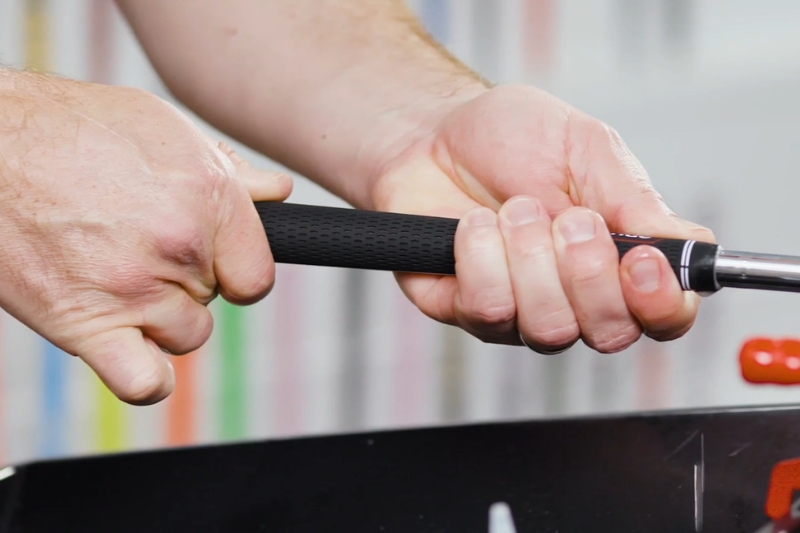
Replacing your golf club grips is a straightforward process that you can easily do yourself. Follow these steps for a successful grip installation:
Gather Your Tools
Before you begin, gather the necessary tools and supplies. You’ll need:
- Grip puller: This tool is used to remove the old grips from the club shafts.
- Solvent: Used for cleaning the shafts and securing the new grips in place. Common options include rubbing alcohol or specialized grip solvent.
- Grip tape: Pre-cut or roll tape for wrapping the shafts to provide a comfortable grip and support for the new grips.
- Grip tape measure: A specialized ruler for measuring the correct thickness of grip tape needed for your specific grip type.
- New grips: Choose the size, material, and style of grips that suit your preferences and needs.
- Sharp knife or utility knife: For trimming excess grip tape.
- Clean cloth: For wiping away solvent and excess grip tape.
Having all your tools ready will streamline the installation process and ensure you don’t run into any hiccups along the way.
Remove the Old Grips
Start by using the grip puller to carefully remove the old grips from the club shafts. Be cautious not to damage the shaft during this process. If the grips are particularly stubborn, you may need to apply some solvent to loosen them.
Once the old grips are removed, inspect the shafts for any damage or residue. It’s essential to start with clean shafts to ensure a proper bond with the new grips.
Clean the Shafts
Apply a solvent to the shafts and use a clean cloth to remove any leftover grip residue or tape. This step is crucial for ensuring that the new grips adhere properly and perform optimally.
Take your time during this step to ensure that the shafts are completely clean. Any residue left behind can compromise the effectiveness of the new grips.
Measure and Cut New Grip Tape
Next, measure and cut new grip tape to the appropriate length for each shaft. Wrap several layers of grip tape around each shaft to create the desired thickness and a comfortable feel. Make sure to overlap the tape slightly to ensure complete coverage.
Using the grip tape measure can help you achieve the right thickness for your specific grip type. Properly applied grip tape will provide a solid foundation for your new grips.
Install the New Grips
With the grip tape in place, carefully slide the new grips onto the shaft, ensuring they are properly aligned. Take your time during this step to avoid damaging the grips or misaligning them.
It’s essential to align the grips correctly to ensure a consistent swing. Misaligned grips can lead to unwanted twists and turns during your swing, affecting your shot accuracy.
Secure the Grips
After installing the new grips, apply a small amount of solvent to the butt end of the grip and let it dry for a few minutes. This will help to secure the grip in place and prevent it from slipping during your swings.
Allowing the solvent to dry will create a strong bond between the grip and the shaft, ensuring that your new grips perform optimally. Once the solvent has dried, your clubs are ready for action!
Tools and Supplies You’ll Need
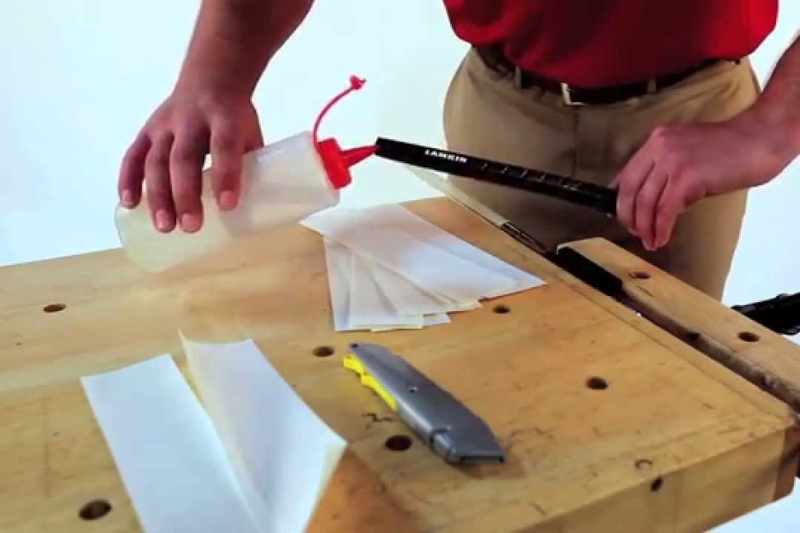
To install new golf club grips successfully, you’ll need the following tools and supplies:
Grip Puller
A grip puller is an essential tool for removing old grips from the club shafts. It allows you to safely and efficiently remove grips without damaging the shaft.
Solvent
You’ll need a solvent for cleaning the shafts and securing the new grips in place. Common options include rubbing alcohol or specialized grip solvent. Avoid using harsh chemicals that can damage the grip material.
Grip Tape
Pre-cut or roll tape is necessary for wrapping the shafts to provide a comfortable grip and support for the new grips. Grip tape is available in various thicknesses, so choose one that suits your preferences.
Grip Tape Measure
A specialized ruler for measuring the correct thickness of grip tape needed for your specific grip type. This tool ensures that you achieve the desired grip thickness for optimal comfort and control.
New Grips
Choose the size, material, and style of grips that suit your preferences and needs. Take your time to select grips that feel comfortable and enhance your performance.
Sharp Knife or Utility Knife
A sharp knife or utility knife is useful for trimming excess grip tape. Ensure that the blade is sharp to make clean cuts without damaging the tape.
Clean Cloth
A clean cloth is necessary for wiping away solvent and excess grip tape. Keeping your workspace tidy will help you stay organized during the installation process.
Proper Grip Alignment and Placement
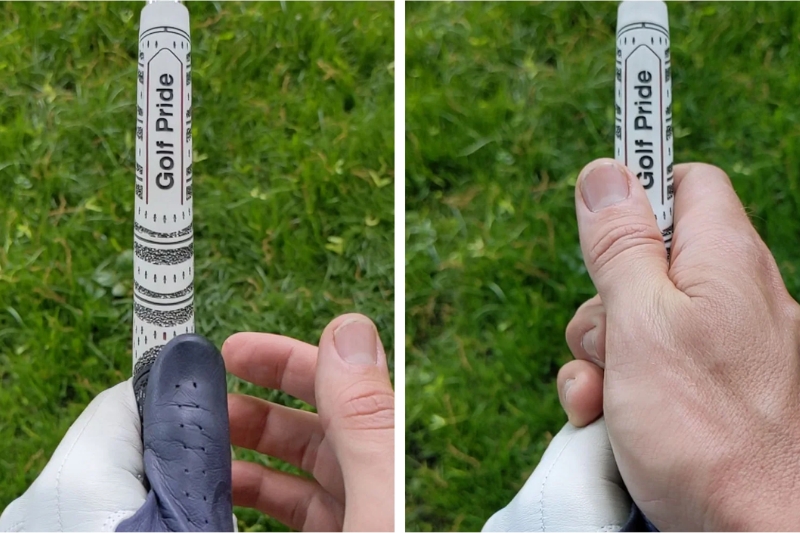
Aligning your grips and positioning them correctly on the shafts is crucial for ensuring a consistent swing and avoiding wrist pain. Here’s how to achieve proper grip alignment and placement:
Alignment
Ensure that the grip is positioned straight on the shaft to prevent the clubhead from twisting or deviating off course. Misalignment can lead to inconsistent shots and poor performance.
To check alignment, hold the club straight out in front of you with the grip facing upwards. The direction of the seam on the top of the grip should be parallel with the ground for a neutral grip alignment.
Placement
The grip should be positioned so that your hands are in the correct position when gripping the club. It should not be too high or too low on the shaft. Proper placement ensures that your hands are comfortable and allows for a natural swing motion.
Experiment with different placements to find what feels most comfortable for you. A well-placed grip can enhance your control and improve your overall performance.
Tips for Checking Alignment
Here are a few tips for checking grip alignment:
- Use a level: A small level can help you ensure that the grip is perfectly aligned on the shaft. Place the level against the grip to check for straightness.
- Visual inspection: Take a step back and visually inspect the alignment of the grip. It should look straight and centered on the shaft.
- Test swings: After installing the grips, take a few practice swings to see how they feel. If something feels off, consider adjusting the alignment or placement.
Conclusion
Changing your golf club grips is a crucial step in maintaining your performance on the course. Worn-out grips can lead to loss of control, reduced power, discomfort, and poor shot-making. By recognizing the signs that your grips need replacing and understanding how to choose the right size and material, you can enhance your overall golfing experience.
The grip installation process is straightforward, and with the right tools and techniques, you can do it yourself. However, seeking professional assistance can provide added benefits, including expertise, quality tools, and warranties.
Remember to maintain your new grips by cleaning them regularly, avoiding harsh chemicals, and storing them properly. With proper care, your grips can last for years, helping you achieve greater control, accuracy, and confidence in your swing.
Investing in your grips is investing in your game. So, take the time to assess your current grips, make the necessary changes, and enjoy the benefits of improved performance on the course. Happy golfing!

I am the owner of Ricks Golf Shop, a popular destination for golf enthusiasts. My passion for golf began in my teenage years and has only grown over the years. With over 10 years of experience in the golf industry, I offer expert advice and quality products. With a friendly demeanor and extensive knowledge, I ensure every customer leaves happy.
